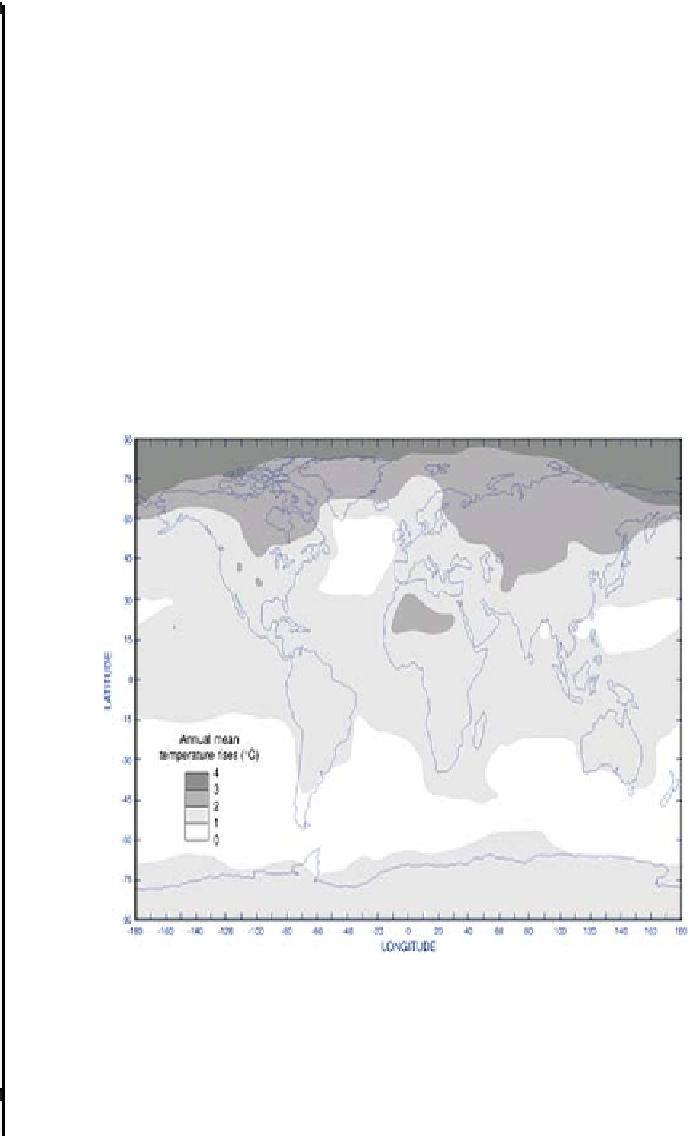Environmental Engineering Reference
In-Depth Information
Peninsula of Graham's Land, where temperatures have risen +2·5° C over these fifty
years. (Compare the IPCC predicted rate of +0·3° C to +0·5° C over the next century.)
The collapse of the Larsen ice shelf at the northern end of the Antarctic Peninsula in 1995
illustrates the unpredictable nature of ice loss. An iceberg 78 km long × 37 km wide ×
200 m thick broke off in a single storm, and James Ross Island became circumnavigable
for the first time. The break-up of Larsen B in 1997 points to a trend in ice shelves at the
northern part of the peninsula.
The important question is: what is causing the retreat and break-up of the ice shelves?
If it is global warming, the resultant rise in global sea levels spells catastrophe for low-
lying areas in the world such as Bangladesh, the Mississippi, the Nile and Mekong deltas,
the Netherlands, Lincolnshire, East Anglia and the Thames valley. However, the fact that
no comparable temperature rises have been recorded in the rest of Antarctica suggests
that warming in the Antarctic Peninsula is a regional effect due to instability in the local
ocean and atmospheric circulation. The future stability of the much larger Ross and
Ronne-Filchner ice shelves further south depends on this. An important factor will be the
behaviour of the ocean
Figure 1
Annual mean rise in temperature for the years 2021-50
relative to 1961-90, using an IPCC scenario of increased
greenhouse gases and sulphate aerosols.
thermohaline circulation which is driven by water temperature and water density (i e





